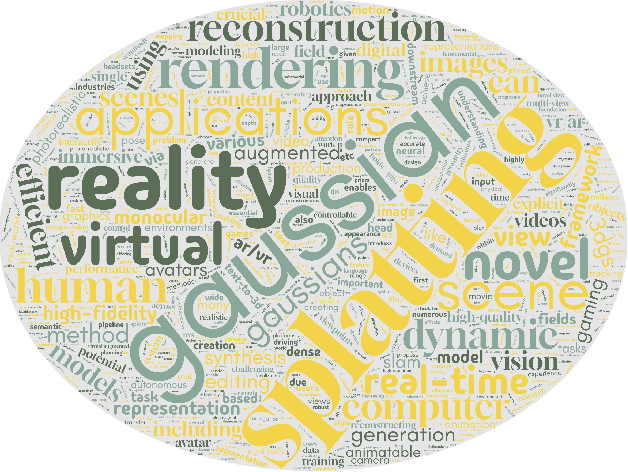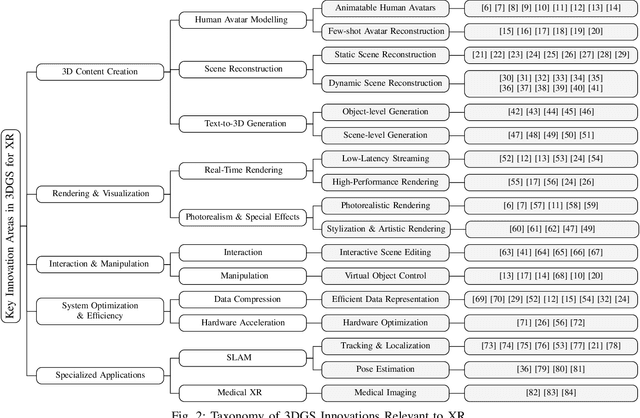Qixuan Liu
Creating Virtual Environments with 3D Gaussian Splatting: A Comparative Study
Jan 16, 2025Abstract:3D Gaussian Splatting (3DGS) has recently emerged as an innovative and efficient 3D representation technique. While its potential for extended reality (XR) applications is frequently highlighted, its practical effectiveness remains underexplored. In this work, we examine three distinct 3DGS-based approaches for virtual environment (VE) creation, leveraging their unique strengths for efficient and visually compelling scene representation. By conducting a comparable study, we evaluate the feasibility of 3DGS in creating immersive VEs, identify its limitations in XR applications, and discuss future research and development opportunities.
Advancing Extended Reality with 3D Gaussian Splatting: Innovations and Prospects
Dec 09, 2024

Abstract:3D Gaussian Splatting (3DGS) has attracted significant attention for its potential to revolutionize 3D representation, rendering, and interaction. Despite the rapid growth of 3DGS research, its direct application to Extended Reality (XR) remains underexplored. Although many studies recognize the potential of 3DGS for XR, few have explicitly focused on or demonstrated its effectiveness within XR environments. In this paper, we aim to synthesize innovations in 3DGS that show specific potential for advancing XR research and development. We conduct a comprehensive review of publicly available 3DGS papers, with a focus on those referencing XR-related concepts. Additionally, we perform an in-depth analysis of innovations explicitly relevant to XR and propose a taxonomy to highlight their significance. Building on these insights, we propose several prospective XR research areas where 3DGS can make promising contributions, yet remain rarely touched. By investigating the intersection of 3DGS and XR, this paper provides a roadmap to push the boundaries of XR using cutting-edge 3DGS techniques.
 Add to Chrome
Add to Chrome Add to Firefox
Add to Firefox Add to Edge
Add to Edge